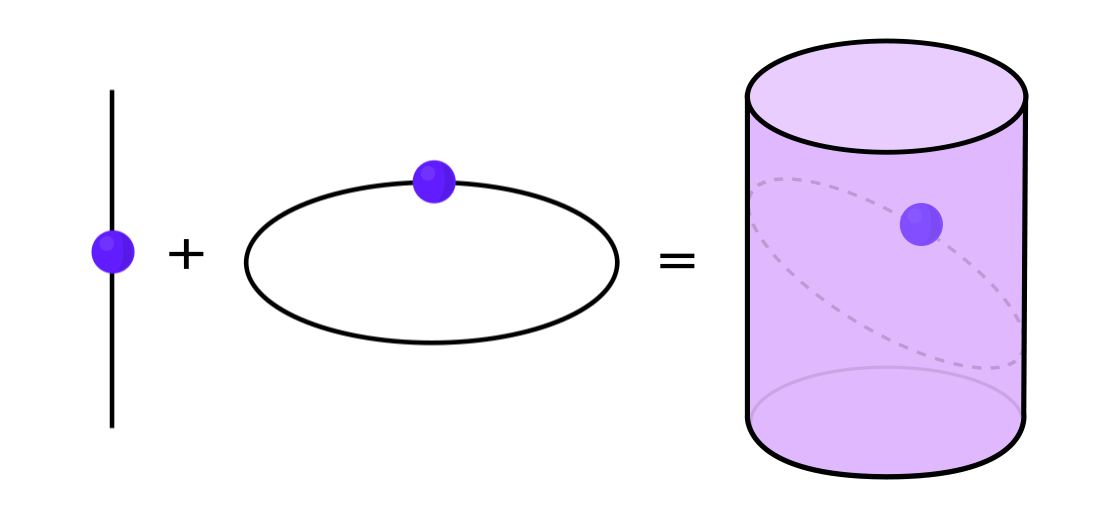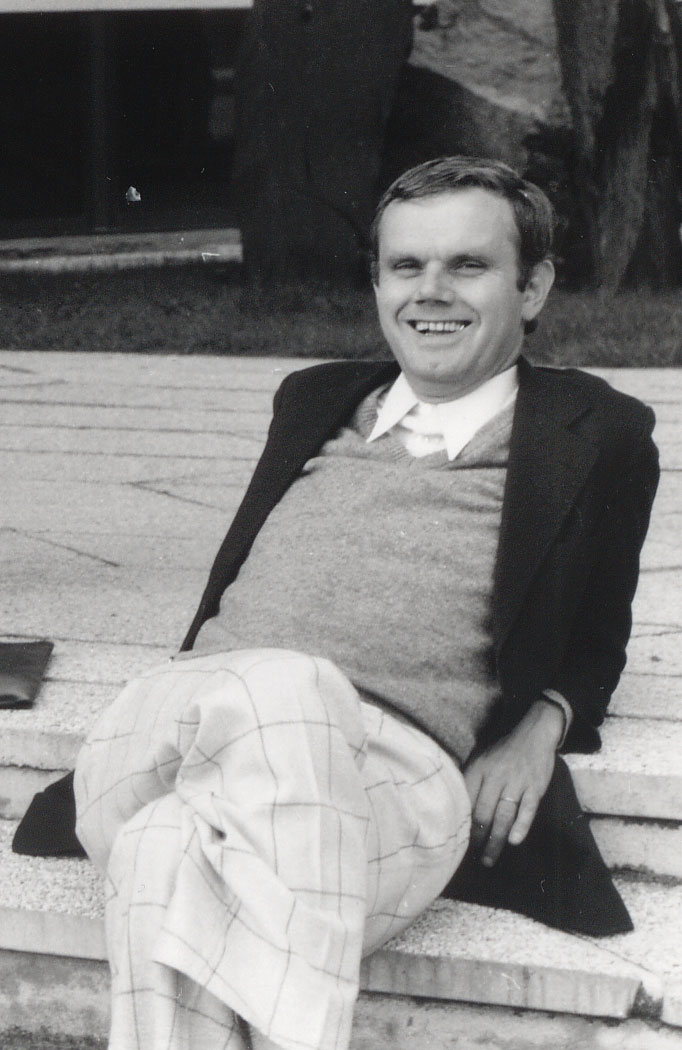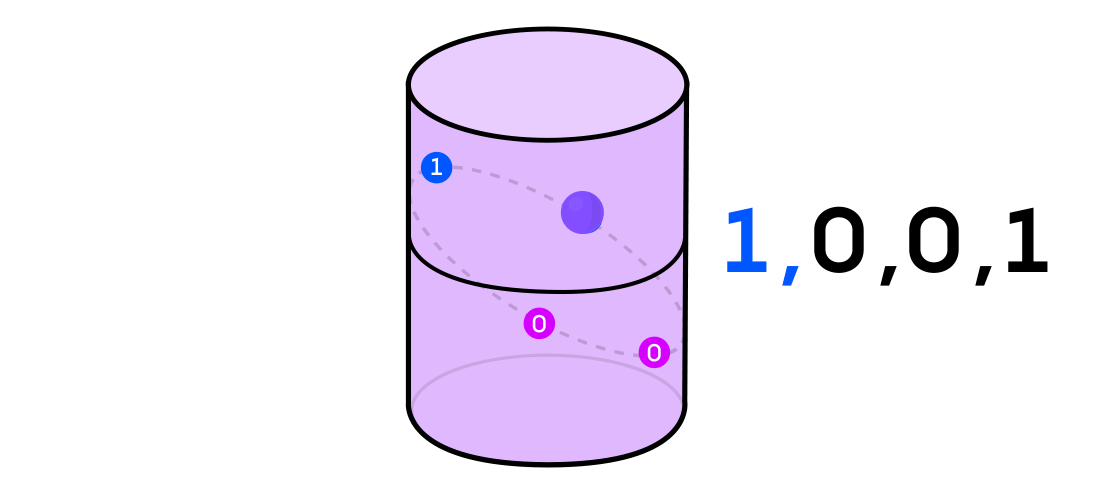Found evidence that all changes are a mixture of order and chance
All change descriptions are a unique mixture of chance and determinism, according to the radical proof of Pinsker's “weak hypothesis”

Imagine a garden where all the flowers of the world grow — delicate orchids, towering sunflowers, wax flowers of Carnegia cactus and smelly inflorescences of titanic amorphofullus . Now imagine that all this vegetable diversity has come down only to two options, and that by crossing them you can produce all the others.
Such is the nature of one of the most radical evidence obtained in recent years. It was made by Tim Austin , a mathematician from the University of California at Los Angeles. But instead of colors, Austin’s work is connected with one of the most studied objects in mathematics: a mathematical description of changes.
These descriptions, known as dynamic systems , are applicable to everything from the movement of the planets to fluctuations in the stock market. Wherever a dynamic system arises, mathematicians want to understand its basics. And one of the basic facts is that any arbitrarily complex dynamic system can be divided into random and deterministic elements.
')
This question is the subject of Pinsker's “weak hypothesis,” which was first formulated in the 1970s. The proof of the hypothesis presented by Austin provides an elegantly intuitive method of thinking about all kinds of incomprehensible phenomena. He showed that, in essence, each of these dynamic systems is a mixture of chance and determinism.
Fate and chance
A dynamic system begins with some input data, for example, from the position of a pendulum, applies certain rules, for example, Newton's laws of motion, and gives a certain result, for example, the position of the pendulum after one second. What is important, dynamic systems allow you to repeat this process: you can take a new position of the pendulum, apply the same rules, and get its position in another second.
Also, dynamic systems are purely mathematical. You can select the starting number, apply the rule “multiply the number by two” and get a new one. This system also allows you to enter the resulting number back into the rule handler and get even more numbers.
Certain types of dynamic systems can be expressed as a combination of two simpler dynamic systems. These two systems operate independently of each other, but they can be combined to form a more complex one. For example, imagine a dynamic system moving a point along the surface of a cylinder. You enter the position of the point, apply the rules and get another point.
This system can be disassembled into two simple ones. The first is a dynamic system moving a point along a circle. The second is a system that moves a point up and down vertically. Combining the two systems - movement along a circle and movement along a straight line - we get a more complex movement of a point along a cylinder.

“Instead of studying the entire dynamic system, you need to break it up into parts, small parts that it makes sense to study,” said Catherine Lindsey , a mathematician at Boston College.
There are two natural candidates for the role of these building blocks. The first are fully deterministic dynamical systems, like our example with a pendulum. If you know the position of the pendulum at some point in time, you can predict it at any time in the future.

Jean-Paul Touveneau in 1975, two years before the formulation of Pinsker's weak hypothesis
The second type of dynamic systems is completely random. For example, imagine a dynamic system with this rule: flip a coin. If there is an eagle, take a step to the left; if tails, right. The final path will be completely random, that is, even if you know everything about the previous path, this information will not help you to predict the next step.
Some dynamical systems are completely random, others are completely deterministic, and most are somewhere in between - they are a hybrid of both. For example, imagine a slightly modified version of our random walk. We walk along a path, on the edge of which flowers are planted, and their colors are also random. The rule remains the same: if an eagle falls, go left; if tails, right. What will be the sequence of flowers flowers?
First you say that random. After all, the colors themselves were chosen randomly, and your movement was also random. However, after you walk past a single flower, the likelihood that you will pass it in the future increases, simply because you are close to it. The sequence of flowers of flowers will not be completely random.
“If you stand next to red, it increases the chances that in two steps you will again meet red, because it may happen that you step left, then right, and return to the same place,” said Austin.
Such a “random walk through a random landscape” produces output data — a sequence of colors — partly random, and partly not. In 1960, mathematician Mark Pinsker suggested that a certain large class of dynamical systems has the following property: they are a mixture of a random dynamical system with a deterministic one.
Pinsker's hypothesis applies to the class of dynamical systems that have an important common property. The points in them do not depart far from each other and are not compressed during the development of the system. More precisely, if you draw a loop around a set of points in your space (while the space can be something like a cylinder surface), start the development of a dynamic system for a long period of time, and then draw a loop around the resulting set of points, then the area that will be occupied by dots in end, coincide with the area that they occupied at the beginning. Such systems are called “measure preserving”
“If Pinsker’s original hypothesis was true, it would be an amazing description of the world,” said Assaf Naor , a mathematician at Princeton University. But Pinsker was wrong. In 1973, Donald Ornstein refuted his hypothesis. “The wording was too ambitious,” said Brina Kra , a mathematician at Northwestern University.
In mathematics, it often happens that after the general hypothesis is refuted, mathematicians try to formulate a more modest version of it. In 1977, mathematician Jean-Paul Touvene proposed Pinsker's weak hypothesis. He softened the original formulation by assuming that the dynamic systems that Pinsker had in mind are the result of combining a purely random system with a system that is almost completely deterministic.
The refinement “almost” distinguishes the Tuvens hypothesis from the Pinsker hypothesis. He meant that a simple deterministic system should have some trace of randomness. This footprint may be vanishingly small, but should be there. And while he is, said Touvene, Pinsker's idea will work.
“It was close to the original hypothesis, and Tuvens showed that if this is the case, then the hypothesis will have a huge number of excellent applications,” said Naor.
In the following decades, mathematicians did not achieve great success in proving Pinsker's weak hypothesis. The lack of progress made Tuveno think that even his weakened wording would be wrong. “At one point, I thought that everything would be the opposite, that it would not be universal,” he said.
And then Tim Austin appeared.
Step solution
To prove the weak Pinsker hypothesis, it was necessary to find an exact way to sift the dynamic system — one that would allow separating its random and almost deterministic parts. Previous work has established that it will be most difficult to isolate elements with a little randomness.
“Small random factors are much harder to catch, and the central part of the proof is to find a way to detect a small random structure,” said Tuvens.

Tim Austin, a mathematician from the University of California at Los Angeles
Austin was able to deal with small random elements of a dynamic system by changing perspectives. Dynamic systems operate in a continuous space, such as a point moving along the surface of a cylinder, or a pendulum rocking in space. In these spaces, points move in continuous arcs according to the rules of a dynamical system. Also, these systems operate on an infinite number of steps - they can act forever.
But in his proof, Austin abandoned the continuous smooth space and forgot about the eternal work of dynamical systems. Instead, he began to analyze what would happen if they were allowed to work in discrete time, for example, a million steps. Thus he applied the method invented by Touvene.
“Toveno’s main contribution was that he realized that if you perform the correct mathematical operations with long finite strings, you can prove the properties of a dynamic system, Austin said. "My main contribution was that I proved what was needed for long finite strings."
Austin imagined a dynamic system producing a sequence of ones and zeros. If a dynamic system is a coin flip, then it is easy to imagine: the tail will be 1, and the eagle will be 0. But any dynamic system can be used to generate a binary sequence by simply dividing the space in which it works into two (not necessarily equal) parts.

Returning to the example of a dynamical system on a cylinder, if a point is on one part of a cylinder, you denote the output value of system 1, and if on the other, then 0.
Austin analyzed these binary sequences using an information theory tool called Hamming's Cubes . Imagine a cube of vertices connected by edges. Each vertex is assigned binary numbers — say, 001 or 101. Each time you move from one vertex to another, one of the three digits changes.
Hamming cubes can be much more complicated than ours, they can have much more edges and vertices in more dimensions than three - but all of them have a property by which the distance between any two vertices - or the number of edges you need to go to go from one vertex to another is equal to the number of places where the information lines corresponding to these vertices differ. Therefore, 000 is at a distance of one edge from 001, two edges from 011, and three from 111.

To isolate random and deterministic elements that make up a complex dynamic system, Austin thought about how often a dynamic system could produce a given sequence of zeros and ones represented on the Hamming cube. He proved that these sequences are distributed over the cube in a certain way. They accumulate in a small number of cube subregions — and this cluster reflects the determinacy of the system — however, they are distributed among the sequences within these clusters randomly, which reflects the randomness of the system.
Such a detour turned out to be necessary for solving the problem, which did not succumb to direct attacks.
“It was not so much the very truth or falsity of Pinsker’s weak hypothesis that surprised me, but the fact that it was possible to prove it, because this task seemed so insidious,” said Lewis Bowen, a mathematician at the University of Texas at Austin. “Before the proof appeared, we, by and large, could not imagine whether it could be done at all.”
The result of Austin gives a basic structure to a wide range of dynamic systems. Mathematicians who often rotate among objects that seem to be interconnected, albeit incomprehensible, in what way, the proof gives out their exact geography. Now they have a guide for these dynamic systems, although it is not yet known what particular discoveries this will lead to.
“Mathematicians are always interested in the building blocks of which something is made,” said Lindsey. “Austin's proof is an excellent result, which probably has many uses in pure mathematics, but I cannot say what they will be.”
Source: https://habr.com/ru/post/454216/
All Articles